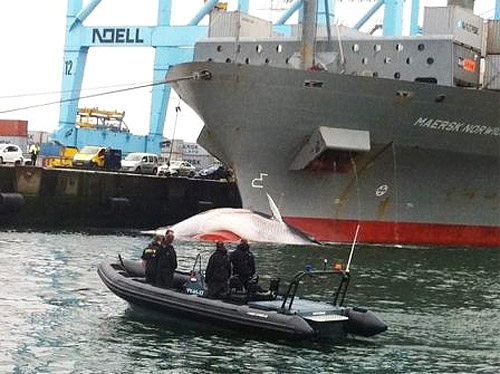Ship strikes are an increasing threat to whales globally. According to the WWF, Shipping traffic increased 300%
between 1992 and 2013, and continues to increase at a rate of 2-3% per year. Ships that keep growing in size and
speed now move 10.3 billion tons of goods around the globe each year. Ship-based travel has also escalated, with
fast-passenger ferries racing through coastal areas also used by whales and dolphins.
The whales that are found beached from ship strikes are only the tip of the iceberg. Most whales when struck
usually sink and never float again. A 2017 study estimates that 17% percent of whales that are fatally struck by vessels ever surface, or
wash ashore. The study shows that endangered marine mammals are being killed at higher rates than is acceptable to
keep their populations growing.
Threat to Whale Populations
The 2017
study shows that mortality from collisions with vessels is one of the main human causes of death for large
whales.
The majority of collisions go unnoticed and unreported but the evidence is clear when many are found beached. In the case of endangered, endemic or geographically isolated
populations, it may pose a significant conservation threat.
The population of the endangered North Atlantic right whale has been falling for at least the last eight years.
The latest estimate stands at a mere 411 individuals. At the end of 2017, 17 carcasses were found in the North
Atlantic and examination revealed that 7 of them had primarily died from entanglements in fishing gear and ship
strikes. Over a five year period, entanglements in fishing gear accounted for 80% of
serious injuries and deaths to right whales.














